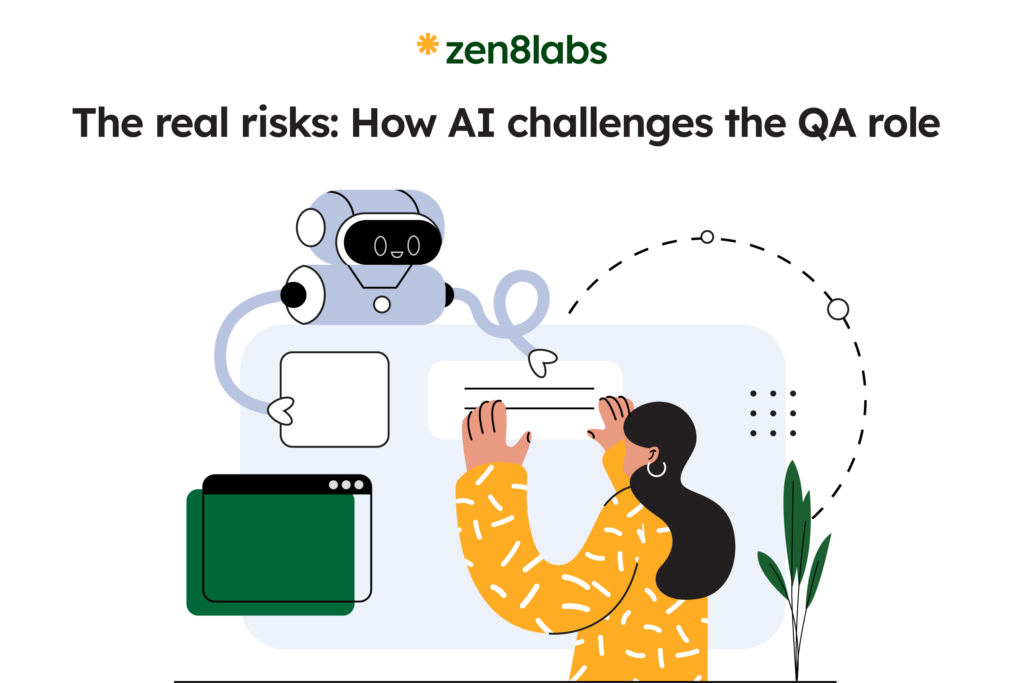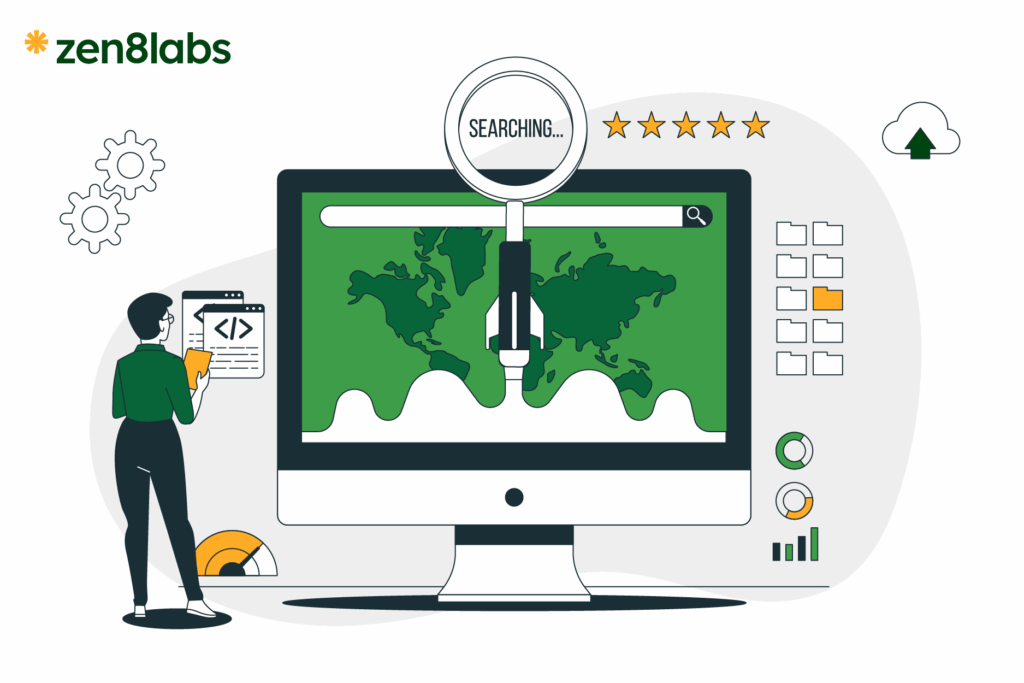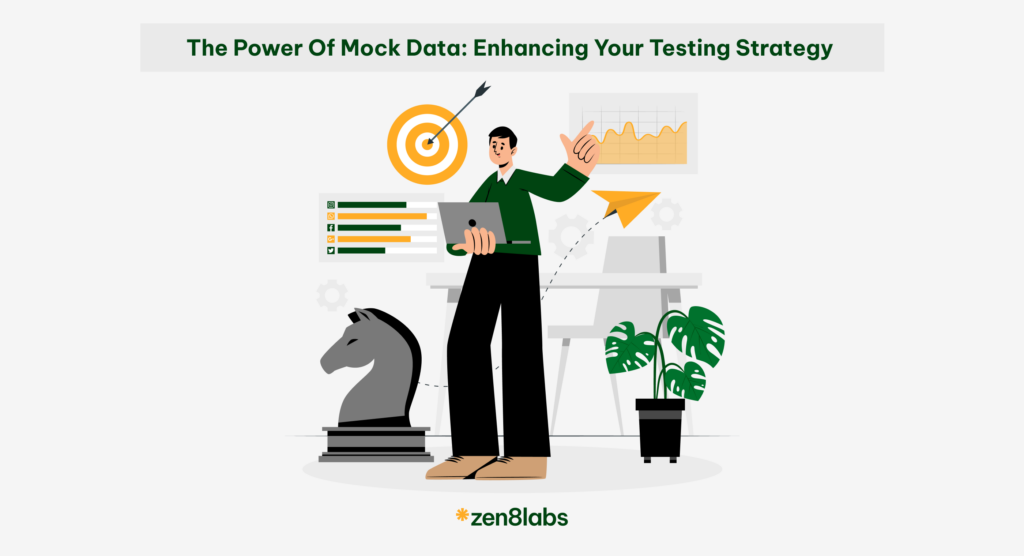
What is mock data?
Mock data, also known as artificial data, mirrors the structure, format, and occasionally the content of real data. It serves as a vital tool for testing and development, being deliberately crafted to simulate real world scenarios without the risk of exposing sensitive or confidential information. Explore how mock data facilitates seamless testing and development processes!
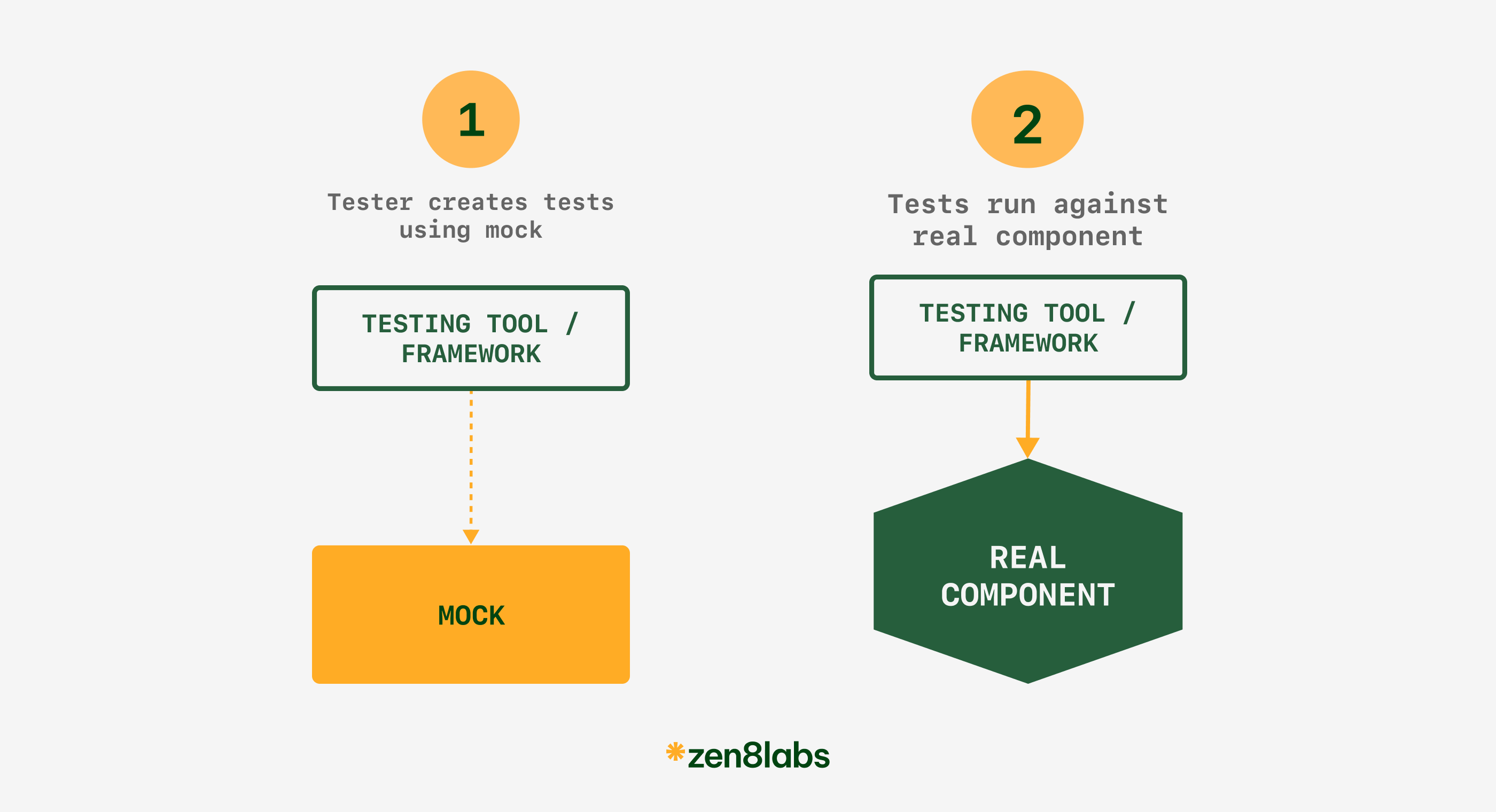
Purpose of mock data in testing
At zen8labs – an IT consultation company, mock data serves pivotal roles across the software development lifecycle:
- Simulating real-world scenarios: Mock data closely mirrors real data, enabling developers and testers to construct testing environments that accurately reflect actual usage scenarios. This facilitates the identification of the software’s performance in real-world situations.
- Ensuring data privacy and security: By utilizing fabricated data that mimics the structure of real data without containing any sensitive information, mock data eliminates the risk of exposing confidential data during testing. This adherence to data privacy regulations like GDPR and HIPAA ensures compliance and data integrity.
- Accessibility and availability:
- Testing without dependencies: At zen8labs, our QA members often engage with many complex projects with numerous external dependencies. In such scenarios, obtaining real data can be challenging due to privacy constraints, data access limitations, or the sheer absence of generated data. Mock data emerges as an invaluable resource, enabling our QA team to conduct testing without relying on these external dependencies. This ensures seamless development and testing workflows, empowering our team to efficiently navigate through complex projects without interruption.
- System availability: External systems, such as third-party services, APIs, or databases, may experience downtime or maintenance, making them unavailable for testing. Utilizing mock data removes this dependency, ensuring uninterrupted testing operations. By mitigating system unavailability, mock data facilitates seamless testing workflows, ensuring continuous progress in the software development cycle.
- Consistent testing schedule: By using mock data, tests can be executed at any time, eliminating the need to wait for the availability of external systems. This flexibility empowers QA members of zen8labs company to maintain a more adaptable and efficient testing schedule
- Comprehensive coverage: While real data may lack coverage for all potential scenarios, particularly edge cases and error conditions, mock data offers a solution. Tailored to include these scenarios, mock data ensures that the software is robust and capable of gracefully handling unexpected situations. This approach enhances the software’s resilience and reliability in real-world usage.
- Testing edge cases and error handling is pivotal in zen8labs’ testing process to ensure that software can gracefully handle unexpected inputs and conditions. Edge cases, representing uncommon scenarios found at the extreme ends of operational parameters, and error handling, encompassing the application’s responses to failures like server errors, are critical aspects of this testing. Mock data plays a vital role by facilitating the creation of specific conditions that may be rare or challenging to replicate with real data.
Benefits of using mock data
- Isolation
- Testing with real-world scenarios often involves external dependencies like databases or APIs. These dependencies can be slow, unreliable, and introduce outside factors that make it difficult to isolate and pinpoint the source of test failures. Mock data allows you to focus on the specific component under test without external influences.
- Mock data enables you to isolate the component under test from external dependencies, such as databases or APIs. This creates a controlled environment for testing, avoiding unreliable factors that can slow down tests and ensuring a more efficient and accurate testing process.
- Speed and efficiency: Tests that rely on external data can be slow and unpredictable. Mock data allows for faster test execution as it eliminates the need to wait for external responses. This results in more efficient and streamlined testing processes.
- Predictability: Mock data lets you define specific scenarios and edge cases for testing, ensuring your code handles them as expected. You can create consistent and repeatable test results by using a fixed seed value for random data generation, enhancing the reliability of your tests.
- Improved Code Coverage: By simulating different data sets, mock data enables you to explore various functionalities and corner cases of your code. This leads to better test coverage, ensuring that more aspects of your code are tested and validated.
- Early testing: Mock data allows for testing to begin early in the development cycle, even before real data is available, or parts of the system are completed. This early testing helps identify and resolve issues sooner, leading to a more robust and reliable software product. At zen8labs, we value early testing as it significantly enhances our development process by catching potential problems at the earliest stages
How do we use mock data for testing at zen8labs
At zen8labs, leveraging mock data is a cornerstone of our testing strategy. By integrating mock data into our testing workflows, we create robust and reliable environments that closely mimic real-world scenarios. This approach not only facilitates early and efficient testing but also ensures comprehensive coverage and consistency across various testing phases. We utilize two primary levels of mocking to optimize our testing processes:
Mocking at API level
At zen8labs, API-level mocking entails close collaboration with our development team. Together, we ensure that APIs deliver predefined data directly to clients, bypassing the actual database and complex business logic. We may also modify response data before sending it to clients. Mocking API responses allows us to simulate diverse scenarios and edge cases, eliminating the need for live data or complex backend processes. This streamlined approach enhances testing efficiency, enabling seamless validation of client behavior under varied conditions.
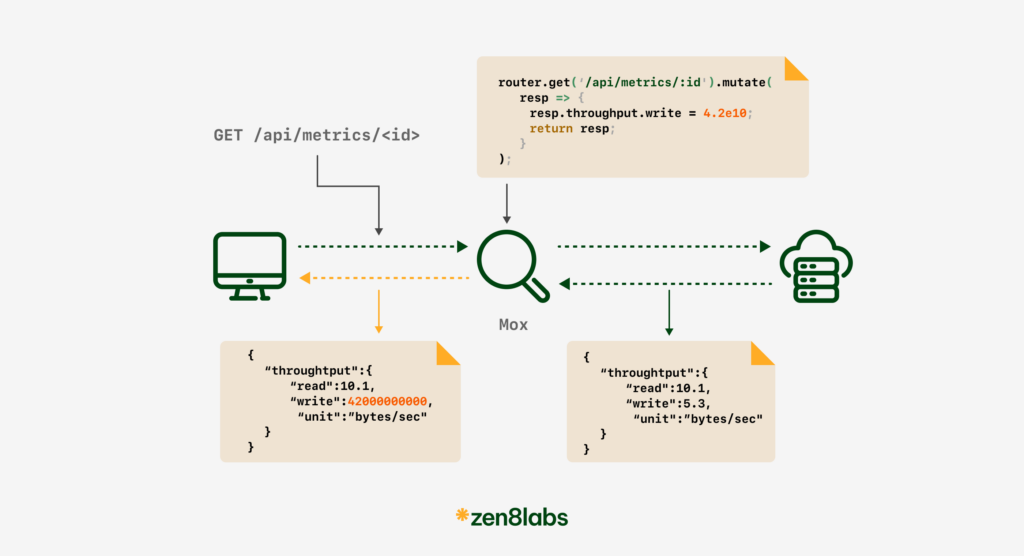
API-level mocking, while valuable, has drawbacks. It requires developer involvement to update mock data for different test scenarios, potentially leading to burnout during extensive testing. This back-and-forth can slow down testing and create bottlenecks in development. Additionally, relying on mock data without clear communication can cause confusion and discrepancies in testing outcomes, jeopardizing software quality for all stakeholders involved. Furthermore, mocking at the API level can obscure integration issues between components. To mitigate these challenges, it’s crucial to identify and understand which parts are mocked and their potential impact on other components. This awareness ensures effective testing and addresses any dependencies or interactions affected by the mocks
Intercepted Mocking
To overcome the limitation of API-level mocking, our zen8labs QA team also uses another approach. We leverage the power of HTTP debugging proxy tools like Proxyman, Charles Proxy, or Burp Suite. These tools act as intermediaries between your application and the internet, allowing you to:
- Intercept and modify requests: Having the flexibility to modify request data such as headers, payloads, and parameters is essential for comprehensive testing and debugging. With HTTP debugging proxy tools our zen8labs QA team can dynamically intercept and modify these aspects of HTTP requests. This capability allows us to simulate a wide range of test scenarios. By manipulating request data on the fly, we can emulate different user inputs, network conditions, and application states, ensuring thorough testing of our software under various circumstances. This level of control not only enhances our ability to uncover bugs and vulnerabilities but also enables us to validate the resilience and robustness of our applications.
- Stub/Mock responses: Stubbing responses involves predefining responses for specific API calls, streamlining testing by ensuring consistent outcomes for repetitive scenarios. Rather than relying on live data or intricate backend processes, stubbing enables QA teams to anticipate and validate system behavior efficiently under controlled conditions.
- Simulate network delays and errors: These tools provide the capability to replicate network delays and errors, enabling thorough testing of your application’s behavior under diverse network conditions. By simulating network delays, such as slow connections or timeouts, and errors like server timeouts or connection failures, QA teams can evaluate how the application responds to these challenges. This assessment helps in evaluating error handling mechanisms and ensuring the application’s resilience in real-world network environments.
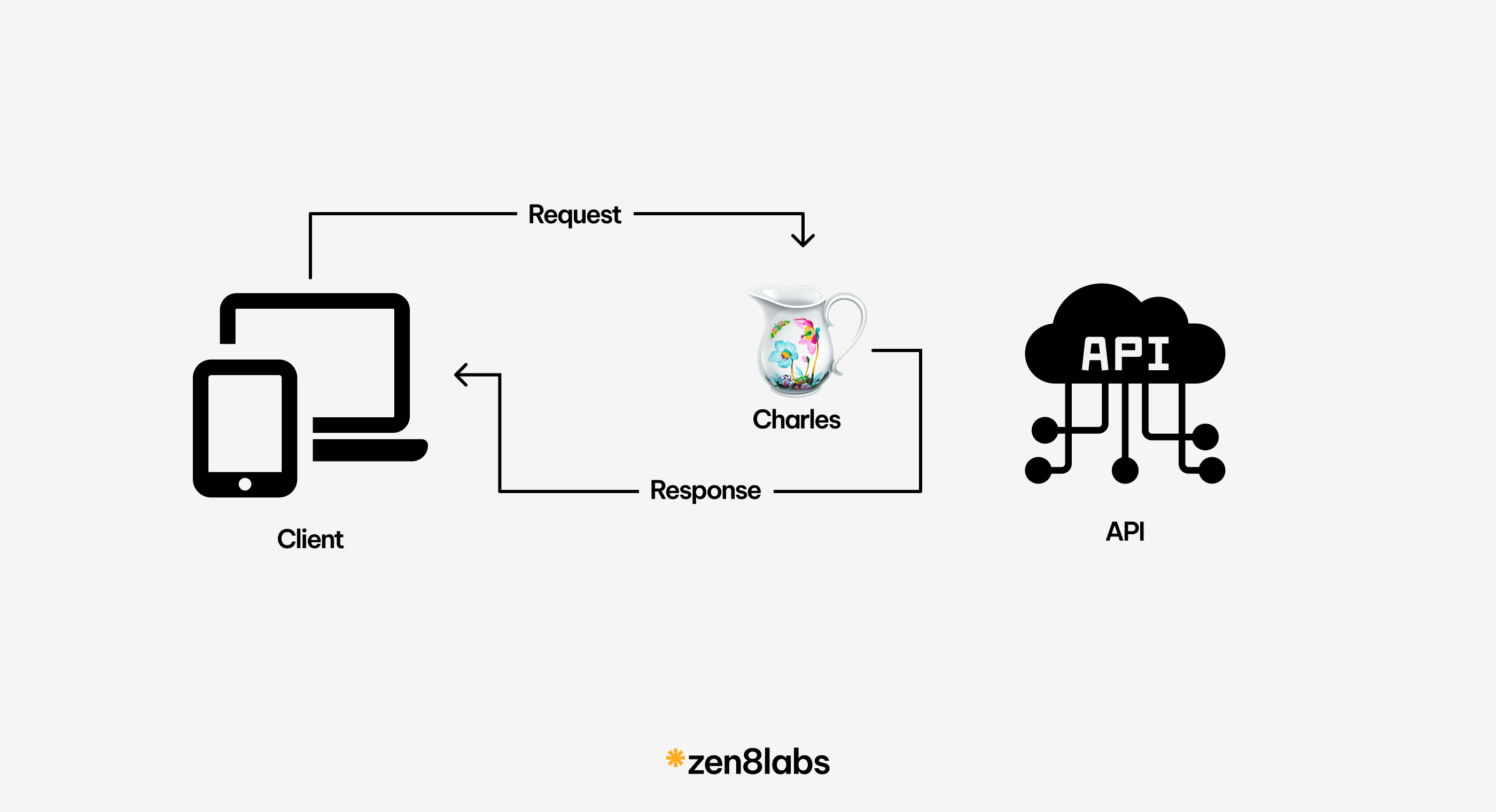
By leveraging HTTP debugging proxy tools, our QA team attains enhanced control over test data and scenarios. Each QA member has the freedom to modify mock data according to their preferences without relying on developer intervention or affecting other tests. This autonomy enables faster iteration and expands test coverage, empowering individual QAs to explore various test cases swiftly without causing bottlenecks or interrupting colleagues’ work.
When employing HTTP debugging proxy tools for mocking such as Proxyman, it’s crucial to recognize that these tools function at the network level. They intercept and modify HTTP traffic between the client and the server. However, this method comes with inherent limitations that may impact the accuracy of testing results:
- Proxy tools typically intercept HTTP requests and provide predefined responses. However, these responses can’t fully replicate the complexity and dynamic behavior of real backend services, like database interactions or real-time data processing. This limitation may result in false positives or negatives in test outcomes. Predefined responses are mainly used to evaluate client behavior with different data, regardless of backend functions.
- Actual backend services contain intricate business logic responsible for processing requests and generating responses based on specific rules and conditions. However, proxy tools may not faithfully replicate this logic, resulting in disparities between mock and real-world scenarios.
- Real backend services manage session states and user data across multiple requests, ensuring seamless interactions. In contrast, proxy tools, operating at the network level, often lack the capability to maintain such states. This deficiency may lead to inconsistencies in test scenarios requiring session persistence or stateful interactions.
- Backend services frequently interact with external systems, APIs, or third-party services. Yet, proxy tools may not accurately replicate these interactions, as they primarily focus on mocking internal service responses rather than simulating the behavior of external dependencies.
At zen8labs, we prioritize flexibility when it comes to selecting mocking techniques for our testing processes. Rather than adhering to rigid rules, we evaluate each scenario based on its unique requirements, constraints, and objectives. This approach allows us to leverage both API-level mocking and Intercepted mocking interchangeably or in combination, optimizing the effectiveness and efficiency of our testing efforts. Here’s why this approach is advantageous:
- Tailored testing: By choosing the most suitable mocking technique for each scenario, we ensure targeted and efficient testing. API mocking is ideal for controlled internal logic testing, while proxy tools offer flexibility for manipulating data in transit.
- Seamless integration: We seamlessly integrate both approaches as needed. For example, we may use API mocks for core functionalities and a proxy tool to simulate specific network conditions or edge cases.
- Flexibility and adaptability: This approach enables us to adapt to diverse project needs. While API mocking may suffice for simpler tests, more complex scenarios can benefit from the combined power of both techniques.
This flexibility empowers our QA team to conduct thorough testing while optimizing time and resources.
Key considerations for using mock data
- Balance vs. realism: While mock data provides control, maintaining realism is crucial. It’s essential to strike a balance between mock and real-world data structures to ensure your code operates accurately when interacting with authentic data.
- Maintenance: Generating and managing mock data can introduce complexity to your tests. Explore utilizing libraries or frameworks that streamline mock data generation and management, simplifying the testing process.
- Not a replacement: While mock data is invaluable for testing, it shouldn’t replace validating interactions with genuine external systems. Testing with real data, when possible, is essential to ensure your application functions seamlessly in real-world environments and accurately reflects user experiences.
Conclusion
In software development, utilizing mock data is integral to effective testing practices. It not only enhances privacy by mitigating the risks associated with real data but also provides a controlled environment for rigorous testing. Additionally, mock data ensures testing availability, enabling the zen8labs development team to conduct thorough evaluations without dependencies on external factors. By comprehending the benefits, employing appropriate tools, and adhering to best practices, the zen8labs development team can markedly enhance the reliability and robustness of their applications.
If you want to explore other topics, read here!
Toan Tran, Head of Quality Assurance

